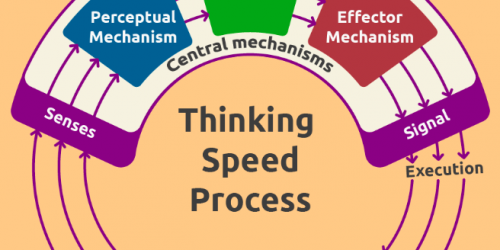Create Resources Students Actually Use: The 10 Real Pains Tutors & Educators Face (and how to respond like a pro)

If you teach, coach, or tutor, you don’t need another theory. You need assets that work on Monday—materials students actually open, use, and finish. Below is a clear-eyed look at the 10 most persistent pain points in modern teaching and tutoring, plus practical moves you can apply right away.
Use this as your field guide. Share it with your team. Most of all—turn it into usable resources your learners will thank you for.
1) The grading pile that never ends
Why it hurts: Feedback windows creep into nights and weekends; quality slips as volume grows.
Pro response: Standardize. Build 1–2 rubrics, a comment bank, and auto-checklists for common tasks. Convert them into one-page sheets and reusable slide pages you can paste into LMS messages or email replies so feedback is fast and consistent.
2) Burnout, low pay, and role creep
Why it hurts: You’re designing, teaching, supporting, reporting—and often marketing yourself if you’re independent.
Pro response: Productize your expertise. Package your best mini-workshops, worksheets, and micro-courses so the same effort serves multiple groups. Protect 1–2 “deep work” blocks each week for asset creation (not just delivery).
3) Inconsistent attendance and engagement
Why it hurts: No-shows tank outcomes and morale; students fall behind between sessions.
Pro response: Add accountability scaffolds: a 1-page session primer, a 10-minute “between-sessions” worksheet, and a closing exit ticket. Keep everything lightweight, mobile-friendly, and printable.
4) Academic integrity in the AI era
Why it hurts: You’re asked to police what tools students use while still encouraging modern skills.
Pro response: Shift to process-visible assessments—drafts, think-alouds, data logs, and reflection prompts. Provide transparent AI-okay / AI-not-okay guidelines in a one-page policy sheet students can reference before they start.
5) Accessibility & compliance (WCAG/ADA)
Why it hurts: Most instructors aren’t trained to remediate PDFs or fix reading order, yet the obligation is real.
Pro response: Start with accessibility-ready templates: large, readable typography, strong contrast, real heading structure, alt text prompts, and logical reading order. Keep word counts tight and layouts clean.
6) Tech inequities and bandwidth limits
Why it hurts: Beautiful content that won’t load is still unusable.
Pro response: Offer low-bandwidth twins of every asset: a lightweight PDF or single-slide summary for each lesson. Favor links over heavy embeds. Optimize images and export compact files.
7) Student behavior, mental health & absenteeism
Why it hurts: Emotional load sits on educators even when services are stretched thin.
Pro response: Build predictable rhythms: a 3-step open (check-in, goal, warm-up), a 3-step close (summary, next action, confidence check), and a self-support menu card you can hand out or pin in your LMS.
8) Discovery & platform take-rates for independents
Why it hurts: Marketplaces help you find learners—but fees and volatility squeeze margins.
Pro response: Grow an owned audience. Use a simple lead magnet (checklist, template, or mini-guide), a booking one-pager, and a testimonials panel you can post everywhere. Syndicate to platforms, but keep the source files and email list in your control.
9) IP protection & bogus takedowns
Why it hurts: Your materials get copied; disputing takedowns steals time from teaching.
Pro response: Add a light signature footer, unique phrasing, and a terms of use panel to every asset. Keep a changelog and original files organized so you can respond quickly when needed.
10) Funding cliffs, staffing, and admin load
Why it hurts: Programs are asked to prove impact with fewer people and less money.
Pro response: Create report-ready artifacts as you teach: a one-page outcomes summary template, attendance snapshot, and short case notes. When reports are due, you’re assembling—not scrambling.
Turning pain into product: build the assets once, use them all year
You don’t need 100 new ideas. You need reliable building blocks:
- A lesson cover slide + one-page summary
- A rubric + comment bank
- A between-sessions micro-worksheet
- An accessibility-ready template pack
- A lead-magnet one-pager + booking page
- A testimonial card + outcomes snapshot
When these pieces are designed well, they compound: faster prep, cleaner delivery, clearer learning, and better retention.
Ready-to-Use Solution: RUC Canva Crash Course
Create resources students actually use—fast. This hands-on crash course gives you plug-and-play templates for everything above (rubrics, checklists, one-pagers, low-bandwidth worksheets, report snapshots) so you can teach more and tinker less.
Why educators love it
- Built for tutors, teachers, and SMEs—not generic marketers
- Accessibility-aware layouts (contrast, headings, alt-text prompts)
- Low-bandwidth exports for easy sharing
- Includes PLR + MRR license so you can adapt for your classroom, your tutoring clients, or resell as part of your service stack
👉 Enroll here: https://riseupcreatives.com/canva-crash-course
How to use the course in week one
- Import the template pack and brand it (fonts, colors, logo).
- Build your core six: lesson cover, one-page summary, rubric, comment bank, micro-worksheet, outcomes snapshot.
- Ship one new asset per day—by Friday, your delivery system is lighter, faster, and more consistent.
Teaching is a craft. Systems protect the craft. When your resources are clear, accessible, and easy to act on, students show up, finish, and grow—and your time returns to what matters most: the learning moment.
Start today: Turn these 10 pains into a toolkit that works on Monday.
Join the RUC Canva Crash Course →





